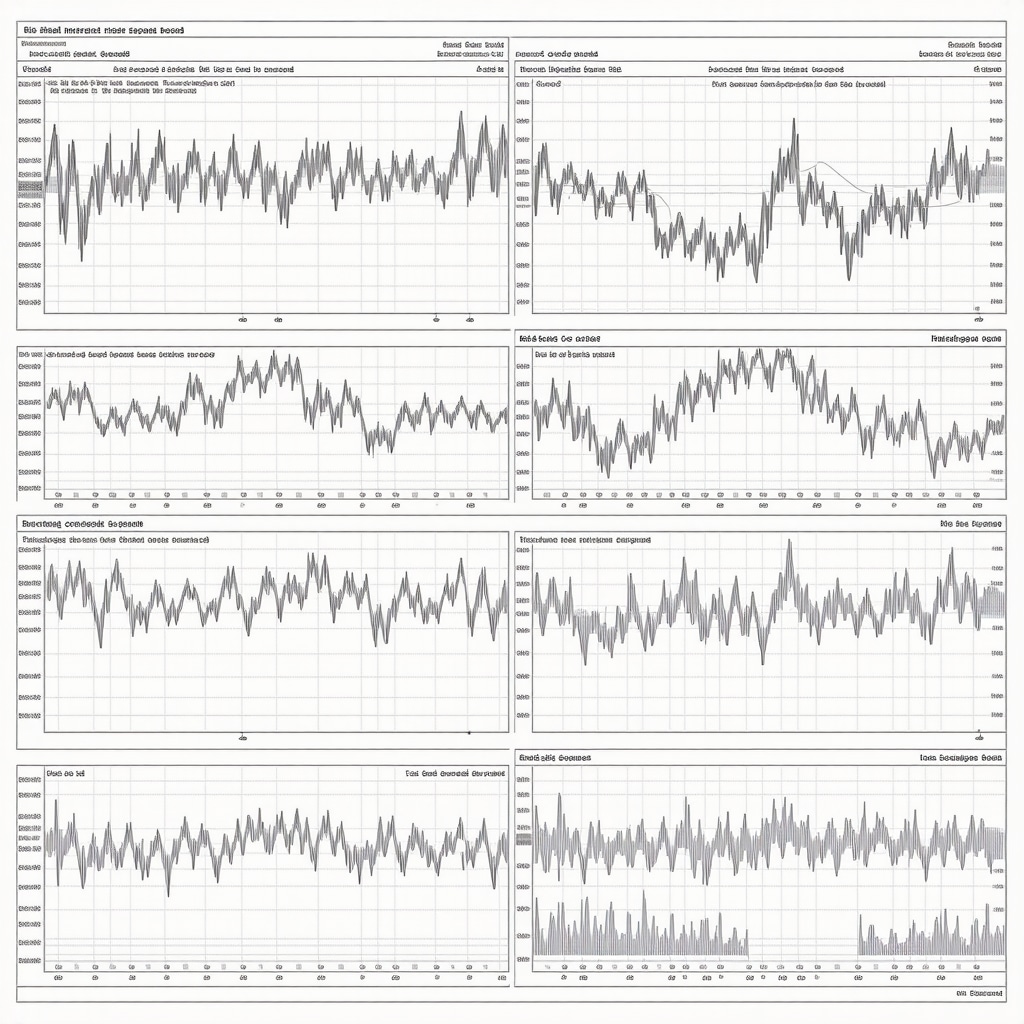Unraveling the Complexities of Daily Mortgage Rate Fluctuations in Tennessee
Understanding the daily movement of mortgage rates in Tennessee requires a nuanced appreciation of macroeconomic indicators, regional market conditions, and financial policy shifts. As an expert in real estate finance, I recognize that mortgage rate volatility is not merely random but driven by layered, interconnected factors that influence both lenders and borrowers alike.
What Are the Key Drivers of Mortgage Rate Variability in Tennessee?
Mortgage rates in Tennessee are predominantly influenced by the movements of long-term bond yields, especially the 10-year U.S. Treasury note, which acts as a benchmark for lending rates. Fluctuations in these yields are often spurred by shifts in Federal Reserve policies, inflation expectations, and geopolitical developments. For instance, a rise in inflation outlooks typically prompts bond investors to seek higher yields, which subsequently pushes up mortgage rates.
Regional economic conditions, such as Tennessee’s employment rates, housing market demand, and local investment trends, also contribute to daily rate shifts. When regional economic indicators signal growth, lenders may adjust mortgage rates to mitigate risk or capitalize on increased demand, causing daily fluctuations.
Furthermore, the banking sector’s liquidity and competitive strategies influence the rate landscape. As lenders respond to market pressures and consumer demand, mortgage rates can vary daily, reflecting both macro trends and institutional policies. For example, a surge in mortgage applications, perhaps driven by attractive refinance options, can prompt lenders to adjust rates dynamically.
What Role Do Market Expectations and Investor Sentiment Play?
Market expectations about future economic policy and monetary policy trajectories significantly impact mortgage rates in Tennessee. If investors anticipate an upcoming rate hike by the Federal Reserve, mortgage rates tend to increase preemptively. Conversely, expectations of economic slowdown or intervention can lead to rate stabilization or decreases.
Investor sentiment, gauged through financial news, economic reports, and geopolitical stability, also influences short-term rate movements. These sentiments create a feedback loop where perceived risk translates into rate adjustments, often on a daily basis, as market participants recalibrate their positions.
How Do Federal Policies and Global Events Impact Daily Rate Movements?
Federal Reserve decisions on interest rates, quantitative easing, and other monetary tools directly influence mortgage rate trends. Announcements regarding rate hikes or cuts are often reflected immediately in bond yields and mortgage rates. Additionally, global events, such as economic sanctions or international conflicts, can induce market volatility, leading to daily rate swings as investors seek safe havens or adjust risk appetites.
For Tennessee consumers and investors, staying informed about federal policy shifts and global economic developments is crucial. These factors often have a ripple effect, influencing mortgage costs even within the same day.
How Can Tennessee Homebuyers and Investors Strategically Navigate Rate Fluctuations?
Given the inherent volatility, expert advice suggests closely monitoring market conditions, leveraging tools such as rate locks, and consulting with local mortgage professionals to optimize timing. Exploring fixed versus adjustable-rate options, as discussed in this comprehensive guide, can mitigate exposure to daily rate swings.
Ultimately, understanding the underlying influences behind daily mortgage rate movement empowers Tennessee buyers and investors to make informed, strategic decisions, maximizing savings and minimizing risk.
For further insights into Tennessee’s evolving mortgage landscape, consider exploring how credit scores shape interest rates or consult with licensed mortgage professionals to craft a tailored approach.
Unlocking the Nuanced Dynamics of Mortgage Rate Expectations in Tennessee
While daily fluctuations in mortgage rates are driven by macroeconomic and regional factors, savvy buyers and investors must also consider the predictive frameworks that can help anticipate future trends. Analyzing market sentiment, economic indicators, and policy signals in tandem can empower Tennessee residents to strategically time their mortgage decisions.
How Can Advanced Data Analytics and Predictive Models Enhance Rate Forecasting?
Modern financial technology offers tools such as machine learning algorithms and big data analytics that analyze historical trends, economic indicators, and market sentiment to forecast mortgage rate movements with greater precision. These models incorporate variables like inflation rates, employment data, and Federal Reserve policy signals, providing a probabilistic outlook rather than relying solely on real-time fluctuations. For instance, platforms that utilize these advanced analytics can help buyers identify optimal windows for locking rates, as discussed in this expert guide on rate determination.
Integrating these predictive insights into your mortgage strategy allows for a more nuanced approach, minimizing the risks associated with market volatility. This is particularly vital in Tennessee’s dynamic economic environment, where local factors such as regional employment trends and housing demand can influence the accuracy of national models.
What Are the Practical Implications of Market Sentiment and Global Events on Local Mortgage Strategies?
While macroeconomic data provides a foundation, investor sentiment and global geopolitical events often precipitate short-term rate swings that can defy traditional forecasts. For example, international conflicts or trade tensions may induce safe-haven flows into bonds, temporarily lowering mortgage rates even amidst rising inflation expectations.
Therefore, maintaining an awareness of global news and financial market sentiment, alongside local economic indicators, becomes essential. Engaging with reputable sources such as the Federal Reserve and financial news outlets can provide real-time insights that inform your timing decisions. Additionally, consulting with local mortgage professionals can help interpret these signals within Tennessee’s specific market context—whether for refinancing or new home purchases.
How Does the Interplay of Policy, Market Sentiment, and Local Conditions Shape Long-Term Strategies?
Beyond short-term rate swings, understanding the long-term trajectory involves analyzing policy pathways, economic resilience, and demographic trends in Tennessee. For example, anticipated shifts in Federal Reserve policy, such as a pause or pivot after rate hikes, can influence the overall direction of mortgage rates over the coming months or years.
To this end, engaging with comprehensive research and forecasts, like those published by this detailed analysis of Tennessee’s mortgage environment, helps develop a strategic mindset. Combining these insights with personal financial goals ensures that mortgage choices align with both current market realities and future expectations.
Curious to explore how predictive analytics could refine your mortgage timing? Share your thoughts below or visit our contact page for personalized guidance. Staying informed and adaptable remains the most effective strategy in navigating Tennessee’s mortgage rate landscape in 2025.
Harnessing Economic Indicators to Predict Mortgage Rate Trends in Tennessee
For seasoned homebuyers and investors in Tennessee, understanding the intricate dance of economic indicators can be transformative. By analyzing unemployment rates, regional GDP growth, and consumer confidence indices, one can develop a nuanced forecast of mortgage rate movements. These indicators, when interpreted through sophisticated models, provide early signals of potential rate shifts, enabling strategic timing for locking in favorable rates.
For instance, a sustained decline in regional unemployment combined with rising consumer confidence often correlates with upward pressure on mortgage rates, as lenders anticipate increased demand and economic vitality. Conversely, stagnation or decline in these metrics may signal a cautious stance from financial institutions, potentially leading to rate stabilization or reductions.
What Role Do Financial Market Microstructure and Liquidity Conditions Play in Daily Rate Variations?
Beyond macroeconomic factors, the microstructure of financial markets—comprising bid-ask spreads, order book depth, and liquidity—significantly influences daily mortgage rate fluctuations. During periods of heightened liquidity, lenders can offer more stable rates, whereas liquidity shortages can induce volatility, as lenders adjust spreads to hedge against increased risk.
Understanding these micro-level dynamics requires a grasp of the interbank lending environment, repo markets, and the behavior of large institutional players. For example, during times of market stress, liquidity constraints can lead to wider spreads and more pronounced daily rate swings, even if macroeconomic indicators remain unchanged.
For Tennessee borrowers, keeping abreast of liquidity conditions—often reported by financial market analytics firms—can inform optimal timing for rate locks or refinancing decisions.
Integrating Quantitative Models for Precise Rate Forecasting in Tennessee’s Unique Market Environment
Advanced quantitative models, such as vector autoregression (VAR) and machine learning algorithms, have revolutionized mortgage rate forecasting. These models assimilate a broad spectrum of variables—macro, micro, and sentiment-based—to generate probabilistic forecasts that help stakeholders anticipate future trends with higher confidence.
For example, a machine learning platform trained on historical bond yields, economic releases, and geopolitical events can detect subtle patterns indicative of upcoming rate shifts. When combined with Tennessee-specific data—like local employment figures and housing demand metrics—these tools offer a tailored, granular outlook.
Real-world applications include dynamic rate lock strategies, where predictive analytics inform optimal lock periods, reducing exposure to adverse rate movements. Industry leaders and sophisticated investors increasingly rely on such tools to fine-tune their mortgage timing strategies.
How Can Tennessee Homebuyers Leverage Big Data to Minimize Mortgage Rate Risks?
Big data analytics enable homebuyers to synthesize vast streams of information—from news sentiment analysis to real-time bond market data—creating a comprehensive risk profile. By integrating these insights, buyers can identify windows of opportunity, avoid peak volatility periods, and negotiate better terms.
For example, predictive dashboards provided by fintech firms offer personalized alerts when models forecast favorable rate environments. Coupled with expert advice from local mortgage specialists, these technological innovations empower consumers to make data-driven decisions that maximize savings and reduce exposure to adverse rate swings.
To deepen your understanding of how big data can enhance your mortgage strategy, consider consulting with financial analytics firms or engaging with local Tennessee mortgage professionals skilled in data-driven insights.
Future Outlook: Global Economic Shifts and Their Long-Term Impact on Tennessee’s Mortgage Market
Looking ahead, the interplay of global economic shifts—such as demographic transitions, technological advancements, and geopolitical realignments—will shape Tennessee’s mortgage landscape in profound ways. For instance, an aging population may influence housing demand and borrowing behaviors, while technological innovations could streamline lending processes, impacting rate structures.
Moreover, international policy developments, like trade agreements or sanctions, will continue to ripple through financial markets, affecting bond yields and mortgage rates. Staying vigilant to these macro trends, coupled with sophisticated analytical tools, will be essential for long-term strategic planning.
Would you like to explore how emerging technologies like blockchain could further revolutionize mortgage markets? Share your thoughts below or contact our experts for a personalized consultation on navigating Tennessee’s evolving mortgage environment.
Deciphering the Hidden Mechanics Behind Mortgage Rate Swings in Tennessee
While daily mortgage rate fluctuations may seem unpredictable, they are in fact governed by an intricate web of macroeconomic signals, microstructural market dynamics, and geopolitical influences. As an expert in financial analytics, I emphasize that understanding these layers enables sophisticated stakeholders to anticipate and strategically respond to rate movements.
How Do Micro-Level Market Microstructure Factors Drive Rate Variability?
The microstructure of financial markets encompasses bid-ask spreads, order book depth, and liquidity conditions, which directly influence daily mortgage rate dynamics. During periods of heightened liquidity, lenders can maintain tighter spreads, ensuring more stable rates. Conversely, liquidity shortages—often precipitated by macroeconomic shocks or market stress—prompt lenders to widen spreads, causing increased rate volatility. This micro-level understanding is crucial for timing rate locks effectively in Tennessee’s regional context, where local liquidity conditions may deviate from national trends.

Image prompt: A detailed diagram illustrating financial market microstructure, including bid-ask spreads, order books, and liquidity flows, relevant to mortgage rate fluctuations.
Can Machine Learning Models Revolutionize Rate Forecasting in Local Markets?
Advanced machine learning algorithms, such as neural networks and ensemble models, integrate vast datasets—encompassing macroeconomic indicators, microstructural signals, and sentiment analysis—to produce probabilistic forecasts of mortgage rate trends. These models can identify subtle, non-linear patterns often invisible to traditional analysis, providing Tennessee investors with a competitive edge. When aligned with local economic data, such as regional employment figures and housing demand, these predictive tools can significantly enhance timing strategies and risk management.
What Global and Regional Economic Indicators Are Critical for Long-Term Rate Predictions?
Long-term mortgage rate outlooks hinge on an array of regional and global economic indicators. In Tennessee, tracking regional GDP growth, employment rates, and demographic shifts is essential. Globally, factors like international trade tensions, commodity prices, and geopolitical stability influence bond yields and, consequently, mortgage rates. For instance, a sustained increase in global inflation pressures often translates into higher long-term interest rates, shaping the broader mortgage environment.
How Can Investors Utilize Big Data to Minimize Rate Risks?
Leveraging big data analytics involves synthesizing real-time financial news, social sentiment, bond market trends, and regional economic reports. Sophisticated dashboards can flag windows of opportunity for rate locking, enabling investors to mitigate exposure during volatile periods. In Tennessee, integrating local housing market analytics with global financial signals creates a comprehensive risk profile, enhancing decision-making precision.
What Is the Future of Mortgage Rate Prediction in an Era of Technological Disruption?
Emerging technologies like blockchain-based lending platforms and decentralized finance (DeFi) are poised to redefine mortgage markets. These innovations promise greater transparency, faster settlement times, and potentially more stable rate structures. Additionally, quantum computing and AI-driven simulations will further refine predictive accuracy, allowing Tennessee stakeholders to navigate an increasingly complex financial landscape with confidence. Staying abreast of these technological shifts is vital for strategic planning.
How Can Tennessee Borrowers Stay Ahead in an Evolving Rate Environment?
Engaging with cutting-edge analytics, maintaining relationships with local mortgage professionals, and continuously monitoring global economic developments are essential tactics. By adopting a proactive approach—utilizing predictive models and big data insights—homebuyers and investors can optimize their timing, reduce costs, and secure favorable mortgage terms amidst persistent volatility. For personalized guidance, contact our expert team and explore tailored strategies that leverage the latest in financial technology.
Expert Insights & Advanced Considerations
1. Microstructure Dynamics Drive Rate Volatility
Understanding bid-ask spreads, order book depth, and liquidity conditions is essential for predicting daily mortgage rate movements. Market microstructure nuances can cause significant short-term fluctuations, especially during liquidity shortages or market stress, influencing the optimal timing for rate locks in Tennessee.
2. Predictive Analytics Enhance Forecast Accuracy
Leveraging machine learning models and big data analytics enables stakeholders to identify subtle, non-linear patterns in bond yields, economic indicators, and sentiment analysis. These tools provide probabilistic forecasts that improve decision-making, reducing exposure to adverse rate swings.
3. Regional and Global Indicators Are Interconnected
Monitoring Tennessee-specific metrics like employment rates and housing demand in tandem with global trends such as geopolitical tensions or international trade developments offers a comprehensive view of long-term rate trajectories. This integrated approach informs strategic planning beyond short-term fluctuations.
4. Advanced Data Integration Minimizes Risks
Combining regional economic data with real-time bond market insights allows for dynamic risk assessment. Big data dashboards can alert buyers when favorable conditions arise, facilitating timely rate locks and refinancing actions, ultimately saving costs and optimizing financial outcomes.
5. Technological Innovation Shapes Future Market Dynamics
Emerging technologies, including blockchain-based lending and AI-driven simulations, promise greater transparency and efficiency. Staying abreast of these developments will be crucial for Tennessee investors seeking stable, predictable mortgage environments amid ongoing technological disruptions.
Curated Expert Resources
- Federal Reserve: The primary source for policy updates and macroeconomic data influencing bond yields and mortgage rates.
- Financial Times: Offers in-depth analysis of global market trends, geopolitical events, and economic indicators affecting interest rates.
- National Bureau of Economic Research (NBER): Provides research papers and data on regional economic conditions that impact mortgage demand and rates.
- Financial Data Analytics Platforms (e.g., Bloomberg, Refinitiv): Enable sophisticated modeling and real-time market monitoring for precise rate forecasting.
- Industry Reports from Mortgage Industry Associations: Offer insights into emerging trends, technological impacts, and policy shifts shaping the mortgage landscape.
Final Expert Perspective
Mastering the intricacies of daily mortgage rate fluctuations in Tennessee demands a comprehensive understanding of microstructure, predictive analytics, and macroeconomic interconnections. As the landscape evolves with technological innovations and global shifts, a strategic, data-driven approach becomes indispensable for informed decision-making. Engaging with authoritative resources and leveraging advanced tools will empower you to navigate this complex environment confidently. For those committed to optimizing their mortgage strategies, continuous learning and adaptation are your most valuable assets. Share your insights or explore tailored strategies by contacting our expert team, and stay ahead in Tennessee’s dynamic mortgage market.

